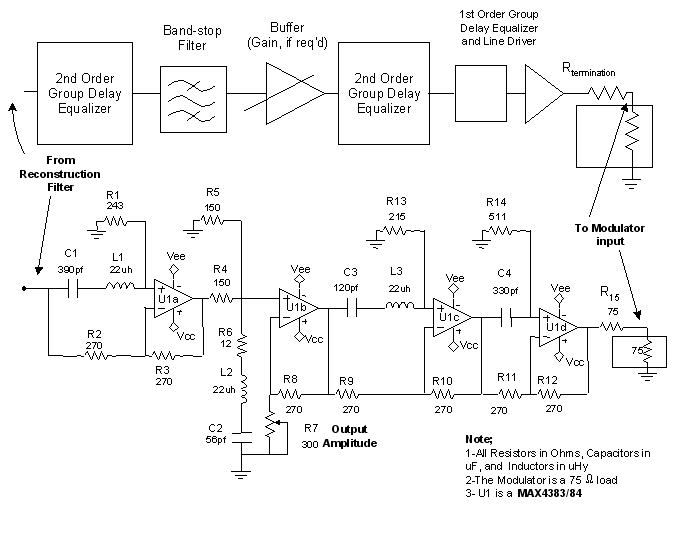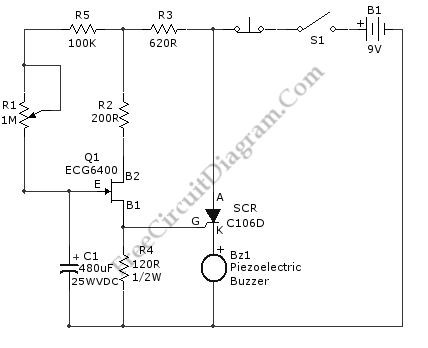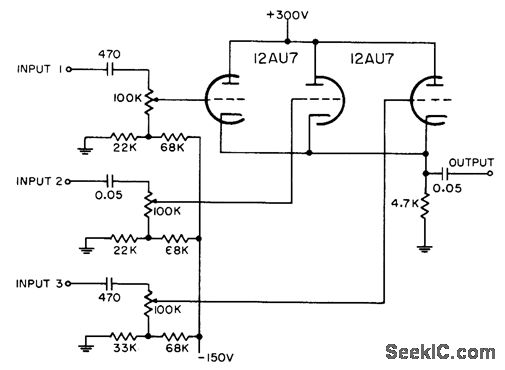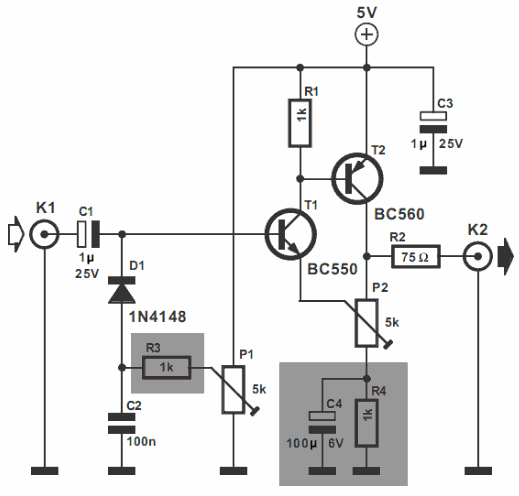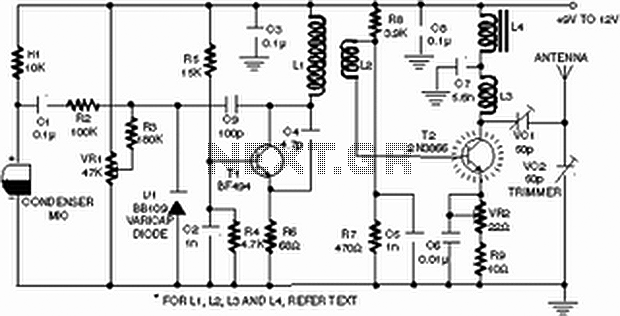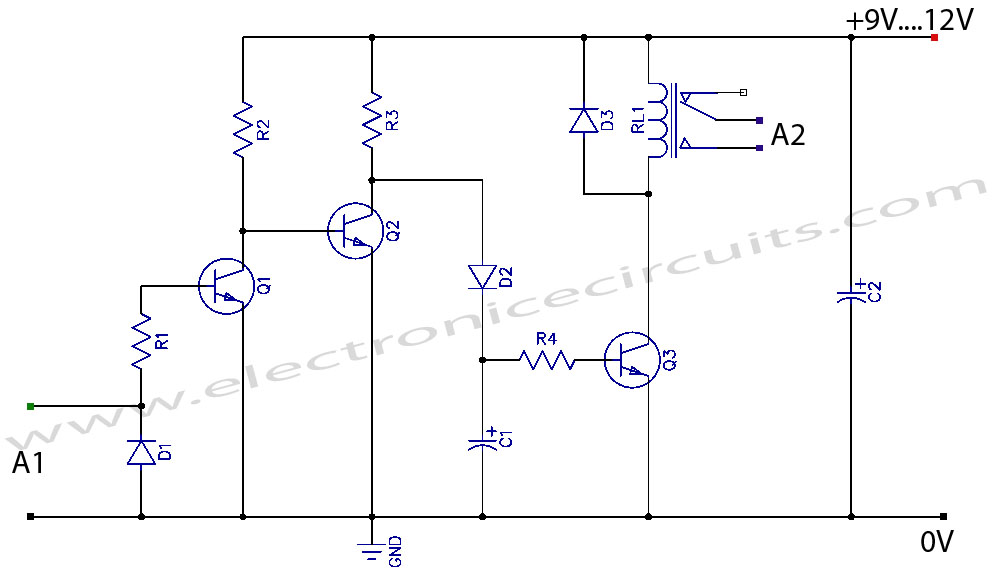
Video Wire: Enable Video Transmission Via Long Cables
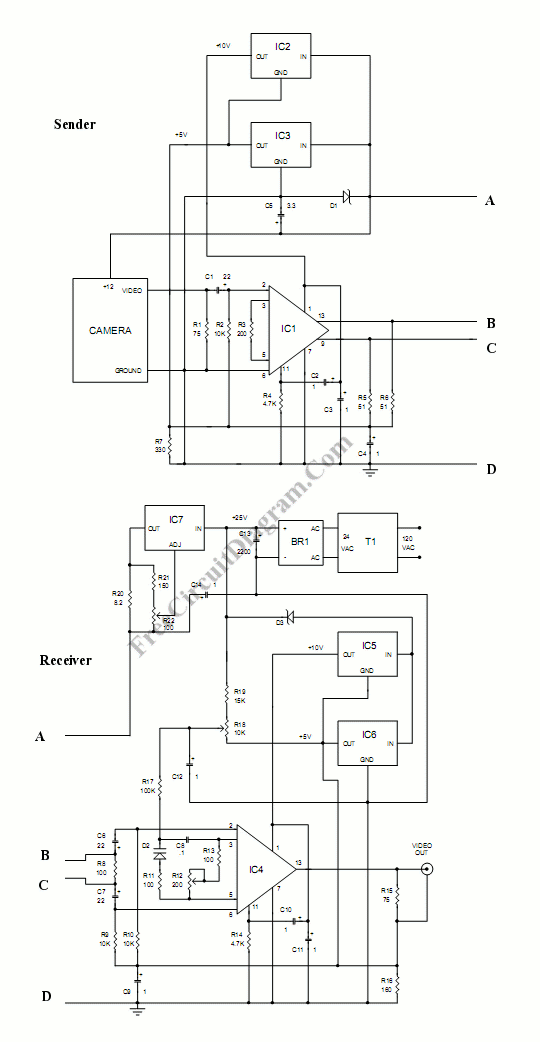
This circuit allows for the connection of a camera using a very long wire. The circuit functions as a video amplifier. At the sending end, the amplifier is utilized to.
The circuit described is designed to facilitate the transmission of video signals over extended distances, which is essential in applications where camera placement is far removed from the monitoring or recording equipment. The primary component of this system is the video amplifier, which serves to boost the strength of the video signal, ensuring that it maintains integrity and quality despite the signal degradation that can occur over long wire runs.
At the sender end of the circuit, the video amplifier takes the weak video signal output from the camera. This signal is typically low in amplitude, making it susceptible to noise and interference when transmitted over long distances. The amplifier enhances the signal's amplitude, allowing it to travel through the wire without significant loss of quality.
The circuit may include additional components such as capacitors to filter out noise and resistors to set the gain of the amplifier. The choice of wire is also critical; shielded cables are often recommended to minimize electromagnetic interference, which can distort the video signal during transmission.
On the receiving end, a complementary video amplifier may be employed to further process the signal and restore it to a usable level for display or recording. The design should also consider impedance matching to prevent reflections and signal loss at the connection points.
Overall, this circuit design is crucial for applications in surveillance, broadcasting, and any scenario where high-quality video transmission is required over long distances.This circuit enables you to connect your camera with very long wire. The circuit is actually a video amplifiers. At the sender part, the amplifier is used to. 🔗 External reference
The circuit described is designed to facilitate the transmission of video signals over extended distances, which is essential in applications where camera placement is far removed from the monitoring or recording equipment. The primary component of this system is the video amplifier, which serves to boost the strength of the video signal, ensuring that it maintains integrity and quality despite the signal degradation that can occur over long wire runs.
At the sender end of the circuit, the video amplifier takes the weak video signal output from the camera. This signal is typically low in amplitude, making it susceptible to noise and interference when transmitted over long distances. The amplifier enhances the signal's amplitude, allowing it to travel through the wire without significant loss of quality.
The circuit may include additional components such as capacitors to filter out noise and resistors to set the gain of the amplifier. The choice of wire is also critical; shielded cables are often recommended to minimize electromagnetic interference, which can distort the video signal during transmission.
On the receiving end, a complementary video amplifier may be employed to further process the signal and restore it to a usable level for display or recording. The design should also consider impedance matching to prevent reflections and signal loss at the connection points.
Overall, this circuit design is crucial for applications in surveillance, broadcasting, and any scenario where high-quality video transmission is required over long distances.This circuit enables you to connect your camera with very long wire. The circuit is actually a video amplifiers. At the sender part, the amplifier is used to. 🔗 External reference
